* Invited and Regular Papers will be published in various Indexed Journals (ISI, SCOPUS, EBSCO, DBLP, ACM, IET/INSPEC, Proquest, Copernicus etc...) based on quality and reviewers' recommendations or in our Books in Springer Verlag. Click here






* Authors will be informed about the title of the Journal before
their registration.
* Contact us by email:
support@inase.org Registration fees
Publication Ethics and Malpractice Statement
Deadlines
(Previous Conference: CSSCC 2016, Vienna, Austria, January 15-17, 2016)
PLENARY SPEAKERS:
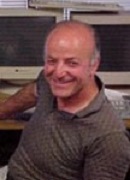
Prof. E. A. Yfantis, Computer Science Dept., University of Nevada, Las Vegas, USA, e-mail: yfantis@cs.unlv.edu
Title: "Computer Science Challeges and Opportunities"
Abstract: Computers captured the imagination and interest of people everywhere since the time of John Von Neumann. Computer Science jobs have been consistently on the rise and computer applications have been increasing exponentially. We live in magic times where computer science has affected every segment of society, every academic discipline, and the technology at large. The collective brain facilitated by the internet can provide more information than any encyclopedia of the past. The digital communication devices, which includes smart phones, tablets, etc., along with the social media and information available over the internet, marks a new era of information dissemination, that reach further, and have greater implications than ever. But the computer spectrum is very rich and includes automation, and new era of artificial intelligence that facilitates machine learning, machine intelligence and machine vision. More than ever, devices that were electromechanical in the past, now they have some or a great deal of intelligence. The cars of today have over a million lines of code to provide the needed control, safety, and intelligence. Self-driven cars with deep learning algorithms, helicopters, airplanes, that are computer controlled mark a new era in computer science with new challenges. As computer power increases, computationally intensive problems related to genetics can now be solved opening new opportunities and challenges in genetics. Real time vision and intelligence needed for robotics are challenges some of which have already been resolved, some being in the process of being solved, and some being the new challenges. Surgery, and telemedicine are some of the beneficiaries of the software-hardware advancements in robotics. The new digital communications, not only have improved satellite power, but have driven the satellite cost down, have improved communications, and decreased the size of the box, so that small satellites, and cube satellites, have more power, and perform more missions and better than the old large volume satellites, with less energy consumption. Space travel and space prob experiments depend heavily on computer controlled navigation systems, and many challenges are still waiting for solutions. Challenges of course create new opportunities for the current, and the generations to follow in computer science.
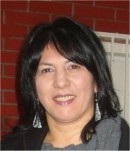
Prof. Dragana Krstic, Faculty of Electronic Engineering, University of Nis, SERBIA, e-mail: dragana.krstic@elfak.ni.ac.rs
Title: "Performance of Wireless Relay Communication Systems in Multipath Fading Channels"
Abstract: In wireless communications, fading is the main cause of attenuation the transmitted signal over propagation channel. Fading may vary with time, geographical position or frequency, and it is modeled as random process. A multipath fading channel is a communication channel containing multipath fading. Various statistical models explain the nature of multipath fading and several distributions describe the envelope of the received signal: Rayleigh, Rice, Nakagami-m, κ-μ, η-μ... The communication wireless relay mobile radio systems will be consider in this lecture. This system has several sections. The desired signal in sections is subjected to some kind of multipath fading. The outage probability is calculated for two cases. For the first case, the outage probability is defined as probability that the signal envelope in any sections falls below the specified threshold. The outage probability for this case can be calculated as Cumulative Distribution Function (CDF) of minimum of signal envelopes from sections. For the second case, the outage probability is defined as probability that output signal envelope falls down the determined threshold. The outage probability for this case is equal to the CDF of product of signal envelopes at sections. Also, useful closed form expression for average level crossing rate (LCR) are calculated. The resulting integrals are solved for example by using the Laplace approximating formula. Later, the expression for LCR can be used for calculating the average fade duration (AFD) of proposed relay system.
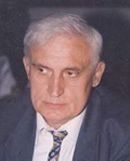
Prof. Zoran Bojkovic, Electrical Engineering, University of Belgrade, Serbia, e-mail: z.bojkovic@yahoo.com
Title: "Healthcare as Converging Technology for The Internet of Things"
Abstract: This work is assigned to researchers, professionals and academicians seeking to current research on upcoming advances in the Internet of Things ( IoT ). The motivation for invoking IoT healthcare services is the possibility to provide not only intelligent perception, but also human-to-human ( H2H ) , human- to- machine ( H2M ) and machine-to - machine ( M2M ) communications. The IoT incorporates transparently a large number of different and heterogeneous end systems, while providing open access to selected data for the development of digital healthcare services. The idea is to determine how IoT and healthcare provide to facilitate economics and societies in terms of sustainable development. This Plenary Lecture is structured as follows. At first, the presentation surveys IoT for healthcare together with services and applications security and technologies for promoting the corresponding services. Next, the future fifth generation ( 5G ) of mobile networks is described including healthcare services. The contribution of Internet of medical things is pointed out, too. Standardization activities and proposals for the future work conclude the presentation.
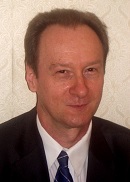
Prof. Milan Tuba, John Naisbitt University, Serbia, e-mail: tuba@ieee.org
Title: "Multilevel Image Thresholding: Methods and Applications"
Abstract: Digital images facilitated significant improvements in many areas, particularly because of the power of image processing techniques. These techniques usually include some preprocessing, normalization, denoising, etc. at the low level, then some middle level morphological analysis like edge detection, segmentation, shape detection, etc. and finally image understanding, object recognition and classification based on the previous two steps. Image segmentation is a very important and often used step in image processing where an image is partitioned into regions that represent areas of interest. Segmentation criteria may include region entropy or texture differentiation but most often intensity level thresholding is sufficient. Multiple level thresholding introduces combinatorial hard optimization problem since the number of possible solutions grows exponentially with the number of required thresholds. In such cases exhaustive search becomes unusable for more than five thresholds since computational time rises to many days on standard computers and increases 255-fold for each additional threshold. Swarm intelligence stochastic population based metaheuristics proved to be very successful for this problem. The other element that determines the successfulness of the segmentation is the choice of the threshold selection objective function which most often uses Kapur's entropy criterion or Otsu's between the groups difference. This plenary lecture will present some successful, mostly medical, image segmentations based on various thresholding criteria and optimization techniques.
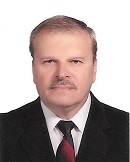
Prof. Alexander Zemliak, Dept. of Physics and Mathematics, Autonomous University of Puebla, Puebla, Mexico & Institute of Technical Physics, National Technical University of Ukraine, Kiev, Ukraine , e-mail: azemliak@yahoo.com
Title: "Analog Circuit Optimization on Basis of Control Theory"
Abstract: The problem of reduction of time of designing of the complex analog systems can be defined as one of key tasks of modern electronics. This problem can be solved on the basis of a generalized approach to optimization of electronic circuits. The generalization of circuit optimization process can be formulated as a problem of minimization of a functional in theory of control. A special vector of control serves in this case as a principal tool for redistributing the computer time between the circuit analysis and the procedure of parametric optimization. The process of circuit designing is formulated in this case as a controllable dynamic system. We need to construct the optimal structure of the vector of control for realization the minimal-time algorithm of designing. Obtaining the optimal sequence of switching points of the control vector in the optimization process can be based on two ideas, the maximum principle of Pontryagin and direct method of Lyapunov. The Lyapunov function of the process of optimization serves as a principal function that separates the perspective strategies for the circuit designing. The optimization process of electronic circuit is formulated as a dynamic controllable system and this process corresponds to the transition process to bring the system in steady state. Stability analysis of each strategy of designing is based on direct method of Lyapunov and revealed a strong correlation between the time of designing and the main indicators of the process of designing, namely the Lyapunov function and its derivative. The strategies that have the greatest absolute value of the time derivative of Lyapunov function exhibit the greatest stability and have the least CPU time. This property is the basis for the constructing an optimal algorithm of designing. The total processor time reduction for the optimal algorithm is equal to thousands in comparison with traditional approach.
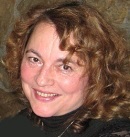
Prof. Mirella Amelia Mioc, Department of Computer Science, Faculty of Automatics and Computers, "Politehnica" University of Timisoara, Romania , e-mail: mirella.mioc@cs.upt.ro
Title: "Cryptographic Applications"
Abstract: Despite the fact that the scientific fundamentals of Coding Theory are already known for years it is important to present the news in this area. LFSR is one of the most popular elements for building a cryptographic generator because it's easy to be implemented in hardware. The concept of security was improved beginning with the first algorithms from Cryptography. All LFSRs used directly are insecure. Using LFSRs with many taps produces some sequences that seem more random and combining several LFSRs there is an improvement in achieving crypto security. Some analyses on using Irreducible Polynomials are developed in Identity Testing. Being at the limit between mathematics and informatics, the cryptology is in a continuous and constant development. Some approaches related to this development in research are focused in application from Knowledge Engineering as well as from Artificial Intelligence. A special research is about the security in networks and all the methods for obtain and keep it. For maximizing of network security must be used the specific node properties. There were developments in databases, policy, compliance and governance, financial fraud and others. Also architecture aspects from Multi-Security Domain Networks were proposed for military and commercial sector. Confidentiality, integrity and availability are the main goals for security services. Authenticity is also a goal to be achieved and for this software and hardware implementation can be used. Many methods were developed for increasing the security as: working in Galois Fields used by Daemen and Rijmen in Rijndael (AES) Algorithm or implementing modular multiplication. There are methods for studying the strengths and the weaknesses of a system. Over time several kinds of comparisons have been made between algorithms.
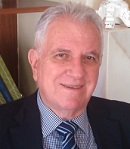
Prof. Christos D. Papageorgiou, National Technical University of Athens, Greece, e-mail: chrpapa@central.ntua.gr
Title: "Simulation of Schrodinger and Maxwell equations with electric transmission lines"
Abstract: 1. The equivalence of a non linear one dimensional differential equation with a non uniform electric transmission line
- The basic properties of the Electric Transmission Line
- Excitations
- Impedances
- Infinite homogeneous transmission lines
- Terminal impedances (short and open equivalent circuits)
2. The simulation of differential equations of Schrodinger and Maxwell with electric transmission lines
- Electron energy levels in atoms ( electrons in spherical traps)
- Quantum wires as linear electron traps
Linear and curved quantum wires and their properties
- Linear antenna's eigen-functions
- Optical layers as photon traps
- Spherical trapped Beltrami E.M waves
3. The simulation of coupled differential equations as coupled electric transmission lines
- Optical Fibers as cylindrical photon traps
- Holly Optical fibers